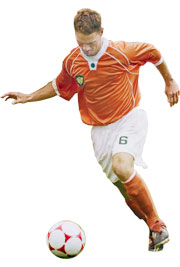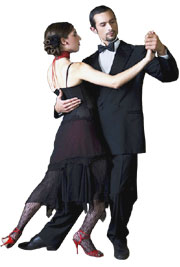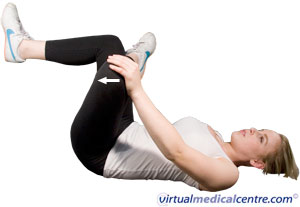- What is groin strain?
- Statistics on groin strain
- Risk factors for groin strain
- Progression of groin strain
- Symptoms of groin strain
- Clinical examination of groin strain
- How is groin strain diagnosed?
- Prognosis of groin strain
- Treatment of groin strain
- References
What is groin strain?

Statistics of groin strain
With the exception of a number of sports, groin strain is an uncommon injury. Key sports that experience greater numbers of this type of injury include soccer, ice hockey, Australian Rules football, basketball and swimming.
Risk factors for groin strain
A number of risk factors have been proposed to predispose individuals to groin strain:
- Participation in sports that involve repetitive or high intensity side to side movement of the leg such as breaststroke kicking in swimming, kicking in soccer or Australian rules football or side to side stepping in basketball;
- Muscle weakness;
- Prior groin strain;
- Muscle imbalance within the thigh;
- Increasing age;
- Reduced flexibility; and
- Incorrect or limited off-season sport specific training.
Symptoms of groin strain
Groin strain is a painful injury that will be felt within the inner thigh. The groin may become swollen and hot to touch. Movement, including walking, may be affected depending on the severity of the injury.
Treatment of groin strain will require reduced physical activity and a period of rest and rehabilitation.
Clinical examination
A clinical examination will look for signs of acute inflammation including redness, localised heat, swelling and point tenderness.
Pain at the initiation of injury is an important symptom that distinguishes muslce strain from other injuries. Point tenderness is used to isolate which groin muscle is involved.
Loss of muscle function can also be clinically assessed. It is dependent upon the severity of the injury and can range from no loss of range of movement (Grade 1 injury) to complete loss of function (Grade 3 injury).
How is it diagnosed?
Groin strain can be diagnosed by a GP, sports physician or physiotherapist. A diagnosis is determined by clinical examination which would include visually inspecting the groin area and assessing how well the thigh can move. Scans and other investigations are usually unnecessary. A grading is then applied to the severity of the injury.
Prognosis of groin strain

Groin strain typically requires some degree of rest and treatment followed by a variable amount of rehabilitation before returning to physical activity.
Treatment of groin strain
Treatment of groin strain follows the PRICE principal, often referred to as RICE, which stands for prevention, rest, ice, compression and elevation.
As with all exercise related injuries, prevention is the best means of injury management. Strategies that can be employed include warming up and cooling down before and after exercise, strength and conditioning training as well as stretching.
Groin stretches can also help. One such stretch is as follows: Lie on your back and position the foot of your good leg flat against the wall so that your knee and hip are bent at a right angle. Cross the ankle of your problem leg over the opposite knee and press down on the knee of your problem leg until you feel a gentle stretch in your groin.

Rest is an important part of treatment to avoid worsening of the injury. Ice and compression are used to shorten the duration and assist with recovery, whist elevation assists with blood circulation. Ice should be applied as soon as possible after injury for approximately 10 minutes. This should be repeated 3-4 times daily for up to a week after injury. A compression bandage or clothing should be used until full recovery from injury.
Your doctor may also prescribe medications for pain relief. Anti-inflammatory medications including Brufen (ibuprofen) are commonly prescribed and available over the counter for muscle strains. However, these medications have a number of potential adverse effects that should be discussed with your doctor.
References
- Sinnatamby C. Last’s Anatomy: Regional and Applied (10th edition). Churchill Livingstone; pg 117-9.
- Nicholas SJ. Adductor muscle strains in sport. Sports Med. 2002; 32(5): 339-44.
- Ibrahim A, Murrell GA, Knapman P. Adductor strain and hip range of movement in male professional soccer players. J Orthopaedic Surgery. 2007; 15(1): 46-9.
- Emery CA, Meeuwisse WH, Powell JW. Groin and abdominal strain injuries in the National Hockey League. Clin J Sports Medicine. 1999; 9(3): 151-6.
- Orchard J, Seward H. Epidemiology of injuries in the Australian Football League, seasons 1997-2000. Br J Sports Med. 2002; 36(1): 39-44.
- Emery CA, Meeuwisse WH. Risk factors for groin injuries in hockey. Med Sci Sports Exercise. 2001; 33(9): 1423-33.
- Ekstrand J, Gillquist J. The availability of soccer injuries. Int J Sports Med. 1983; 4: 124-8.
- Tyler TF, Nicholas SJ, Campbell RJ, et al. The association of hip strength and flexibility on the incidence of groin strains in professional ice hockey players. Am J Sports Med. 2001; 29(2): 124-8.
- Page P. Pathophysiology of acute exercise: Induced muscular injury: Clinical implications. J Athletic Training. 1995; 30(1): 29-34.
- Strauss E, Campbell K, Bosco J. Analysis of the cross-sectional area of the adductor longus tendon. Am J Sports Med. 2007; 35: 996-9.
- Kumar V, Abbas A, Fausto N. Robbins and Cotran Pathological Basis of Disease (7th edition). New York: Saunders Elsevier; pg 47-8.
- Moore K, Dalley A. Clinically Orientated Anatomy (5th edition). Lippincott Williams and Wilkins; pg 597-9.
- DePalma B, Prentice WE (eds). Rehabilitation Techniques in Sports Medicine (3rd edition). 1999; pg 411-43.
- American Academy of Orthopaedic Surgeons. Muscle strains in the thigh [online]. 2007 [cited 10 February 2009]. Available from URL: http://orthoinfo.aaos.org/ topic.cfm?topic=A00366
- Brukner P, Khan K (eds). Clinical Sports Medicine (3rd edition). North Ryde, NSW: McGraw-Hill, 2007.
All content and media on the HealthEngine Blog is created and published online for informational purposes only. It is not intended to be a substitute for professional medical advice and should not be relied on as health or personal advice. Always seek the guidance of your doctor or other qualified health professional with any questions you may have regarding your health or a medical condition. Never disregard the advice of a medical professional, or delay in seeking it because of something you have read on this Website. If you think you may have a medical emergency, call your doctor, go to the nearest hospital emergency department, or call the emergency services immediately.







